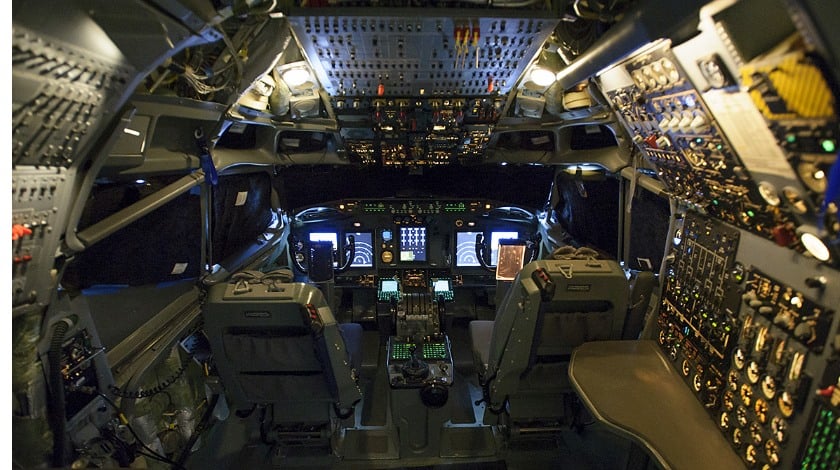Boeing delivered to NATO the first of fourteen E-3A Airborne Warning and Control System (AWACS) aircraft with cockpit upgrades that improve mission-readiness, decrease customer costs and reaffirm Boeing’s overall commitment to the fleet.
The Communication Navigation Surveillance/Air Traffic Management (CNS/ATM) digital flight deck and avionics enhancements ensure compliance with current and future air traffic control and navigation requirements.
Upgrades include five full-color glass displays, which provide crewmembers with customizable engine, navigation and radar data to improve mission execution. Digital capabilities allow NATO to reduce flight crew size by one, leading to greater efficiencies and cost savings.
“These improvements allow the removal of airspace restrictions, which saves NATO flight crews time and fuel and supplies operators with easier access to the information they need,” said Wendy Atkinson, Boeing AWACS CNS/ATM program manager.
NATO’s AWACS fleet is the alliance’s first integrated, multinational flying unit, providing rapid deployment, airborne surveillance and communication for NATO operations.
Thirteen additional NATO AWACS will receive installation of the upgrade as part of a $257 million modification effort. The second aircraft upgrade is already under way, with the entire fleet slated for completion in 2018.
The modernization has also been installed on a U.S. Air Force AWACS, which is completing extensive flight tests and will deliver in 2017.
“The AWACS program is a vital asset for the NATO alliance and a best practice in transatlantic defense industrial cooperation,” said Brian Moran, vice president, Government Affairs for Boeing in Europe. “Partnering with companies from both sides of the Atlantic helped us get this important capability back in the hands of our customers on time and on budget.”

